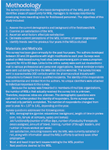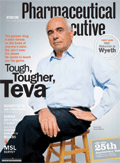A Survey of Medical Science Liaisons
Pharmaceutical Executive
MSLs tend to stay put. Just three in 10 left a job after less than a year. Half held their current position for more than three years.
IN GENERAL, MEDICAL SCIENCE LIAISONS are a happy lot, according to a newly released survey. Four out of five MSLs are not seeking other employment, a number that has held steady over the past four years. And why should they look? MSLs have an intellectually stimulating job that allows them to work from home—when they are not attending medical meetings or visiting very bright people. The money isn't bad either. Pharma has given MSLs substantial raises over the past few years. The average salary before bonus in 2006 reached $104,000, up 23 percent from about $85,000 in 2003, when the first of four annual surveys was completed. However, men are being paid significantly more than women in this field. In 2006, male MSLs earned an average of $110,000 before bonus, up from $101,000 in 2005. Women's salaries grew only about $1,000 in the past year, to almost $99,000. Fifty-four percent of 2006 survey respondents were women.

Job Satisfaction among MSLs 2003-2006
Eight of 10 MSLs said they were satisfied with their jobs. Of all respondents, 43 percent stated they were "very satisfied" with their current position, while 37 percent said they were "somewhat satisfied." Five percent were "somewhat dissatisfied," seven percent were neither "satisfied" nor "dissatisfied," and three percent were "very dissatisfied."
MSLs tend to be very accomplished individuals. Half of them have multiple degrees. The majority responding had a PharmD (55 percent), followed by a BS in pharmacy (23 percent). 2006 saw a modest increase in the number of MDs and nurse practitioners over previous years. Three of five respondents said their company required MSLs to have a doctorate.
The survey asked respondents to rank factors that contribute to their job satisfaction. The five components with the highest ratings were opinion-leader relationship development, attending medical meetings, training others within the company, advisory-board coordination/participation, and investigator-initiated trial development. For those that said they were "very" or "somewhat satisfied" with the position, the two leading reasons were intellectual challenge and the option to work from home (see chart on). When respondents complained, they singled out the regulatory climate (18 percent), administrative tasks and paperwork (17 percent), their company's unclear direction about future career options (11 percent), and a lack of field-based opportunities for advancement (10 percent).
MSLs work hard. They spend, on average, 46 to 50 hours per week on the job. Half said their in-office work hours vary from week to week. But almost one in five said they worked in the office only one day a week. Almost a third (32 percent) of those polled this year report working two nights per week away from home, down slightly from 36 percent the first year. Asked how many MSLs cover the entire United States in their functional group, two of five said more than 30 MSLs. The number of MSLs with such large groups rose eight percent since the survey in 2003. But one-in-five respondents said their group covered the United States with six to 10 MSLs. In 2006, a new question asked how many MSLs were employed by the company. Twenty-seven percent reported between 50 and 100 MSLs, while another 27 percent reported 101 to 200 MSLs. Thirteen percent of respondents reported that their company employed more than 200 MSLs.

Professional Background of MSLs by Degree 2006
Of those polled, one in five had worked three-to-five years at their present job, while nearly as many had been there longer than five years. However, 28 percent of respondents had been on the job less than a year. But even those that have been on the job for quite a while show no signs of leaving soon. Two in five said they planned to stay five years or more. One in five reported that they would stay one or two years, while 15 percent said they hoped to change jobs in three to five years.
Only three in ten have worked as an MSL for more than one pharma company, according to this year's survey. Data over the four years shows that MSLs tend to stick with one company, although there was somewhat less movement in the first year of the survey, when only 23 percent of MSLs reported that they had changed jobs. Respondents said they left the previous company after a reorganization, downsizing, or merger. Other frequent responses included: corporate culture, the relationship with a manager, too much travel, and lack of trust.

Methodology
Most MSLs are not looking to change jobs. Two in five are not looking for new employment but would consider other opportunities if they arose, while nearly as many (38 percent) say they are happy right where they are. Seven percent of this year's respondents were actively pursuing other opportunities, while 15 percent were looking, but not aggressively. This year's result for those not seeking new employment continues to be lower than the initial survey year. Although there is variation of individual responses each year, the composite "not looking" response remains approximately 80 percent (see chart).
The survey also asked whether MSLs have a designated thought leader (TL) call panel. Three in five said that they have a formalized panel, a number that has dropped from four in five since the first year's survey. Among those with a TL call panel, 68 percent reported 20 to 50 TLs on their panel. Fifteen percent of MSLs had 50 to 75 TLs on the panel, while 12 percent called on fewer than 20 TLs. These numbers have held steady since the first survey in 2003.
Where do MSLs go from here? One-in-four respondents sees a position as senior MSL as the next step up the career ladder. Sixteen percent said they would like to manage MSLs, while one in ten didn't know what comes next. The high rate of "I don't know" responses may lie in the answer to another question. More than half of all respondents (53 percent) say that their companies do not have a formalized career path for MSL advancement. Among the respondents who say the company does have a career path for MSLs, only one in four reported an advancement path that extended into other parts of the organization.
On the whole, the group surveyed is satisfied with their respective MSL roles. The intellectual challenges, opportunities for personal development, and the option to work from home make MSL a highly attractive job. Based on the survey, professional development is a primary area of opportunity for MSL managers to improve the lot of their employees. Even so, MSLs responding to this survey are surprisingly unclear about where they can go within the organization—whether up the ladder or into a cross-functional role. Offering career-progression discussions and exposure to other areas of the organization would help MSLs develop a better understanding of options open to them. And to retain field-based talent, employers will have to explore job opportunities that allow the MSLs to remain in the home-based setting they so highly value.
Erin L. Albert, PharmD, is president & CEO of Pharm, LLC. Cathleen M. Sass, PharmD is a regional medical liaison at Sanofi-Aventis. They can be reached at erin@msljobsatisfaction.com

FDA Grants Priority Review to Regeneron’s Eylea for Macular Edema Following Retinal Vein Occlusion
April 18th 2025Regulatory action was based on data from the Phase III QUASAR trial, which demonstrated that Eylea HD dosed every eight weeks achieved non-inferior visual acuity outcomes compared to Eylea in patients with macular edema following retinal vein occlusion.
Navigating Distrust: Pharma in the Age of Social Media
February 18th 2025Ian Baer, Founder and CEO of Sooth, discusses how the growing distrust in social media will impact industry marketing strategies and the relationships between pharmaceutical companies and the patients they aim to serve. He also explains dark social, how to combat misinformation, closing the trust gap, and more.